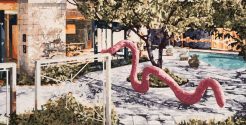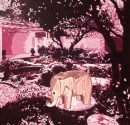“Spotlight: Jim Richard,” New American Paintings
Since the late 1970s, New Orleans artist Jim Richard has been making paintings, drawings, and collages in which art-stuffed modernist interiors melt into multihued graphic fields. Devoid of inhabitants, his signature claustrophobic spaces are visual essays on taste and influence, composed as if with maximum disorientation in mind.





